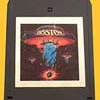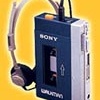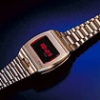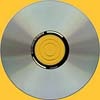Video 2000 (or V2000; also known as Video Compact Cassette, or VCC) is a consumer videocassette system and analog recording standard developed by Philips and Grundig to compete with JVC's VHS and Sony's Betamax video technologies. Distribution of Video 2000 products began in 1979 and ended in 1988; they were marketed exclusively in Europe, Brazil, and Argentina. Philips named the videotape standard Video Compact Cassette (VCC) to complement their landmark Audio Compact Cassette format introduced in 1963, but the format itself was marketed under the trademark Video 2000. Video 2000 succeeded Philips's earlier VCR, VCR-LP and Grundig's SVR formats. At the time of its launch Video 2000 offered several innovative features unmatched by the competing formats VHS and Betamax: Only half of the magnetic tape is scanned by a helical scanner during each side pass. The cassette can then be flipped over to use the other half of the tape, thus doubling playing time. The tape is totally enclosed when not in use. Unlike competing formats that have spaces in the cassette for the tape loading mechanism to be inserted, thus exposing the delicate magnetic tape surface, VCCs had a retractable sheath that covers such space. The sheath is retracted as a tape is inserted into the machine and only then can the tape cover be raised to fully expose the tape. Because of its Dynamic Track Following (DTF) technology (involving an advanced, movable video head tip), by design V2000 does not require a video tracking control (however, Grundig's model 1600 lacked DTF). All V2000 VCRs sport an auto-rewind function (later matched by VHS and Betamax) Dynamic Noise Suppression to reduce tape hiss on the audio track. Provision of a data track alongside the video track channel selection and timer programming are undertaken by a 0-9 numeric keypad Philips released the first Video 2000 VCR, the VR2020, in the UK in 1979. Philips models were re-badged as Pye, amongst others, and even re-skinned as Bang & Olufsen, whilst Grundig models were re-badged as ITT. Notably, whilst Siemens had re-badged Grundig VCR machines, for Video 2000 they adopted those from Philips. A key intention of the V2000 format, particularly those sporting the DTF feature, was tape compatibility: A tape from any machine should play perfectly on any other machine. Unfortunately, when the VR2020 reached the shops it was discovered that its audio head was 2.5 mm out of position compared to that on Grundig's Video 2x4. This meant that the sound would be out of sync with the picture when played back on the other type of machine. Both manufacturers hastily moved the audio head 1.25 mm to a common position on the production line, but compatibility issues remained for recordings made on the first generation of machines.[3] Furthermore, the required close tolerances and fragility of the DTF system resulted in significant inter-machine compatibility issues which were never fully resolved. Manufacturing of Video 2000 ceased in 1988 and Betamax some time after, both having lost the videotape format war to VHS. V2000's failure may be partially attributable to its late entrance to market (slowed by problems in the development of the DTF system). Also, although it was technologically superior to the competition in several ways, it could not compete with VHS and Betamax's key advantages: VHS and Betamax already had established market share and considerable prerecorded video libraries Betamax camcorders arrived at market first VHS and Betamax enjoyed worldwide distribution. By the latter half of the 1980s, Philips had already begun producing their own VHS-compatible VCRs.










Do You Remember Video 2000?
Do You Remember Video 2000?